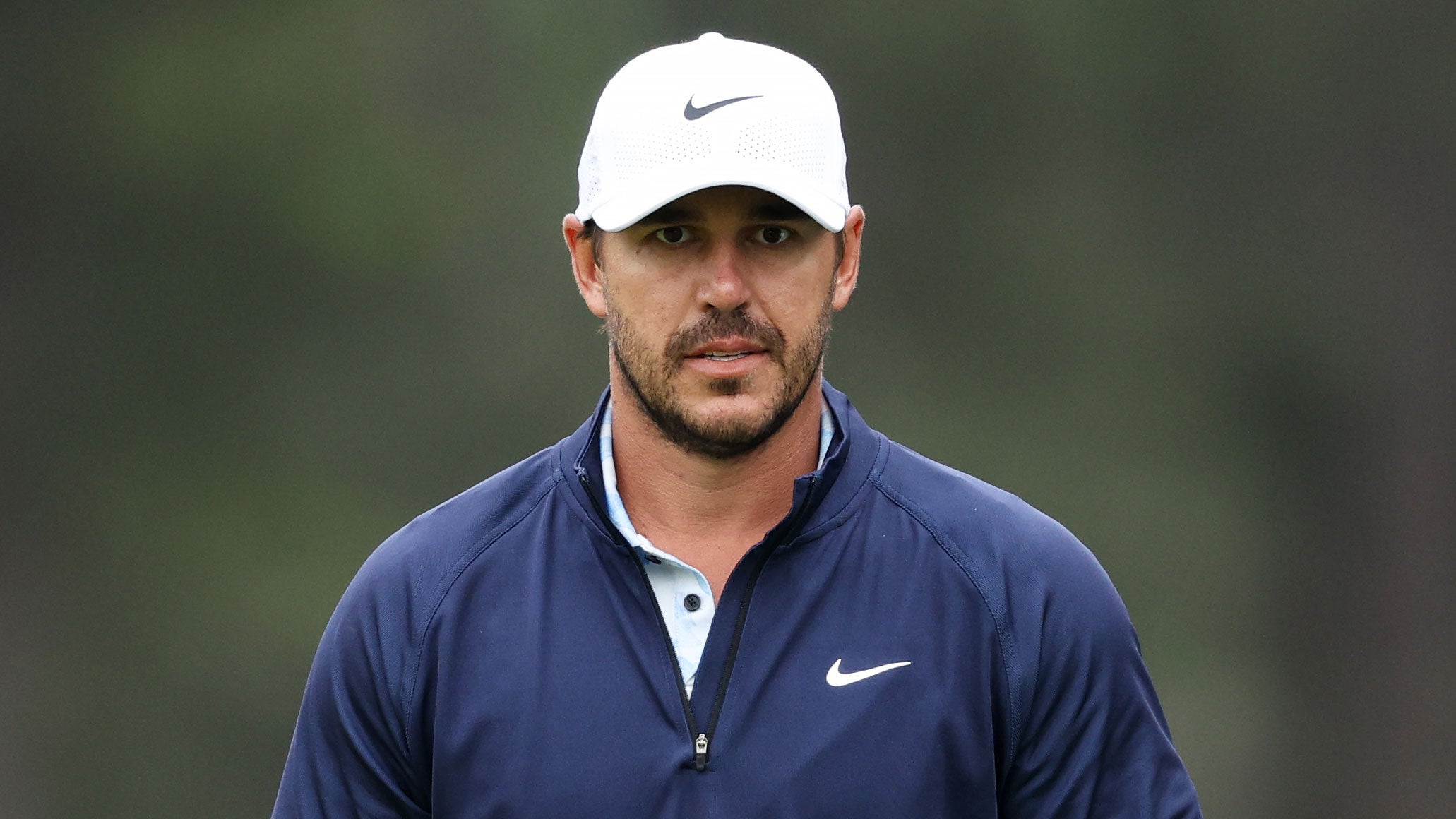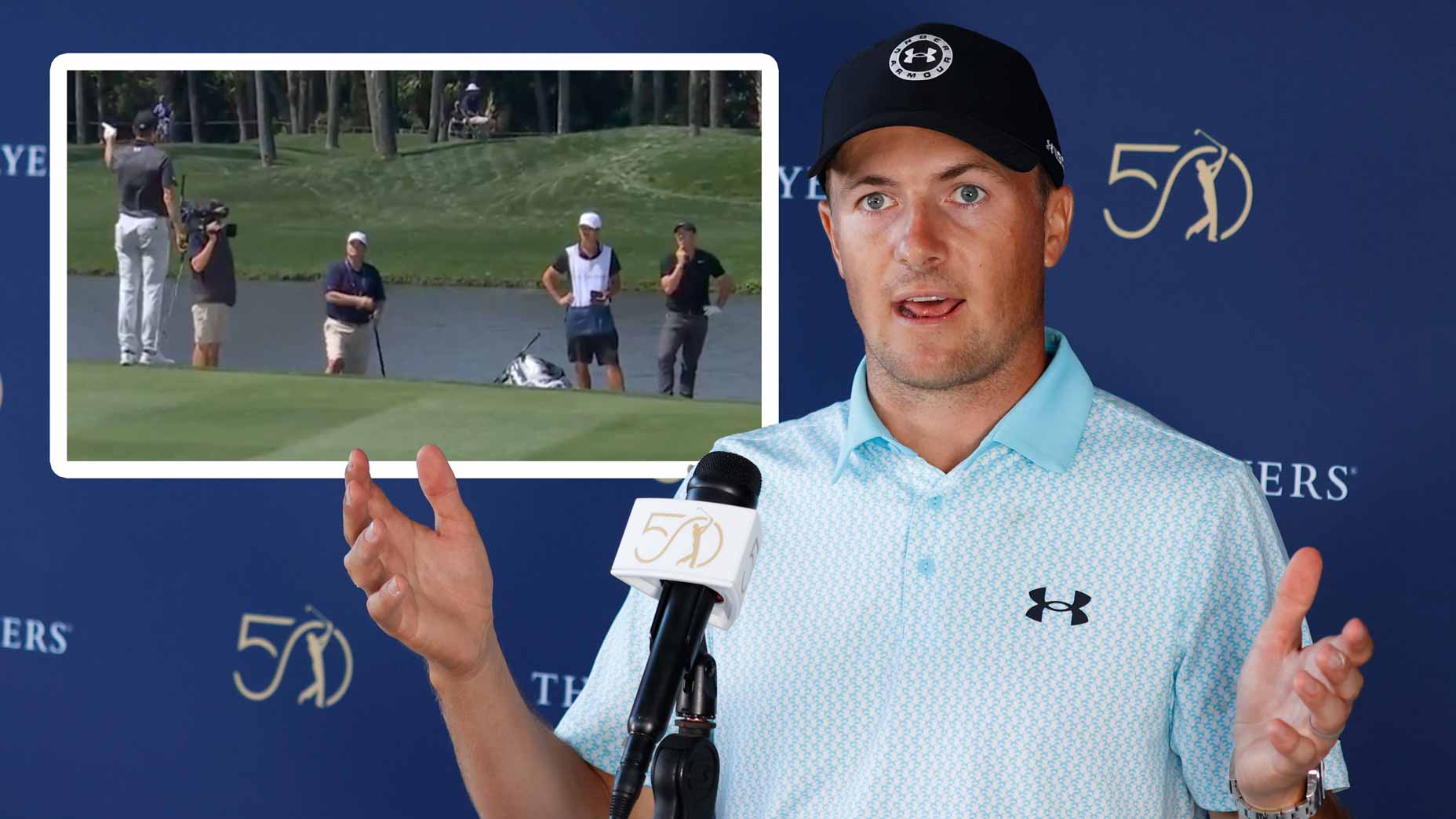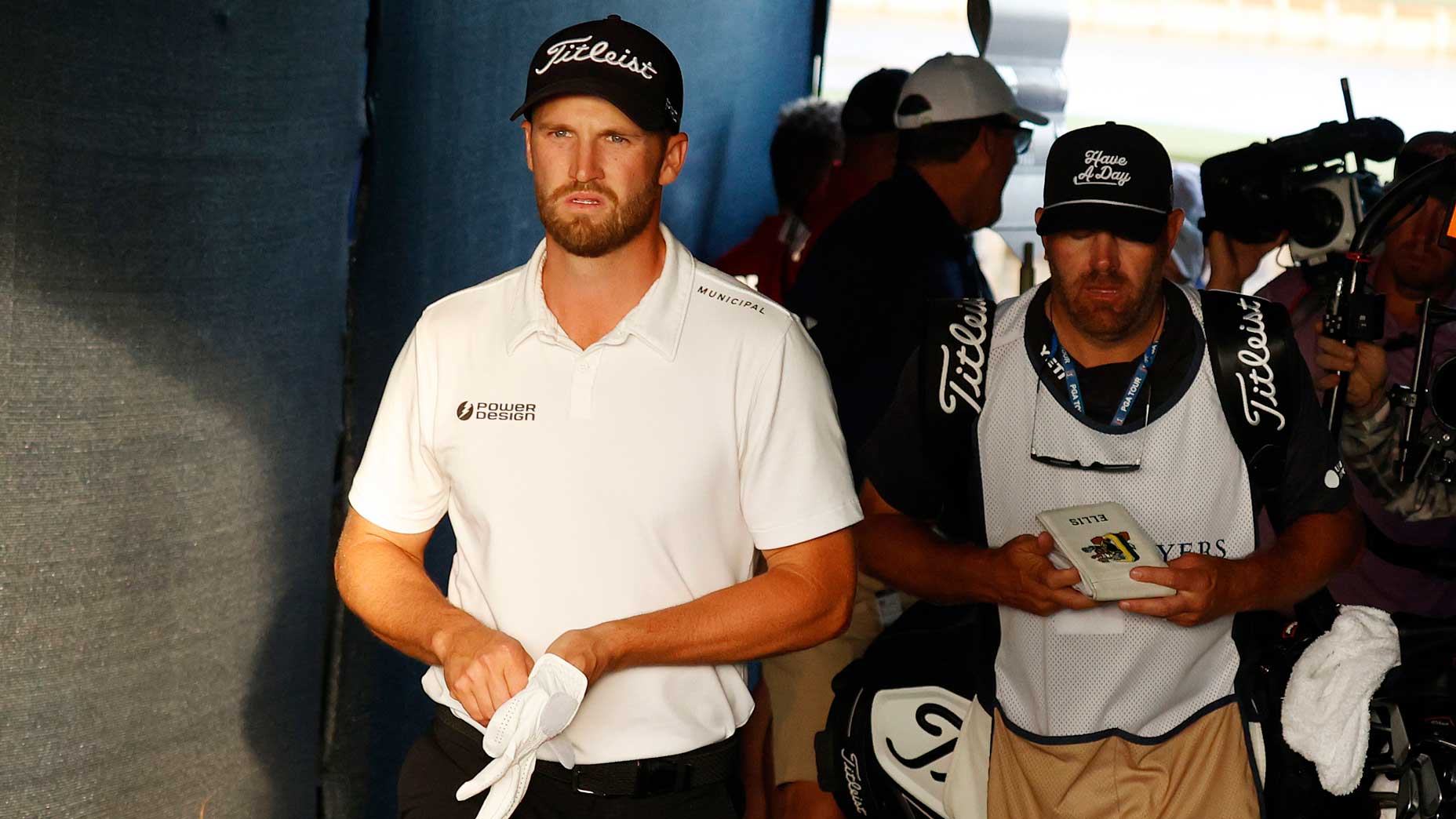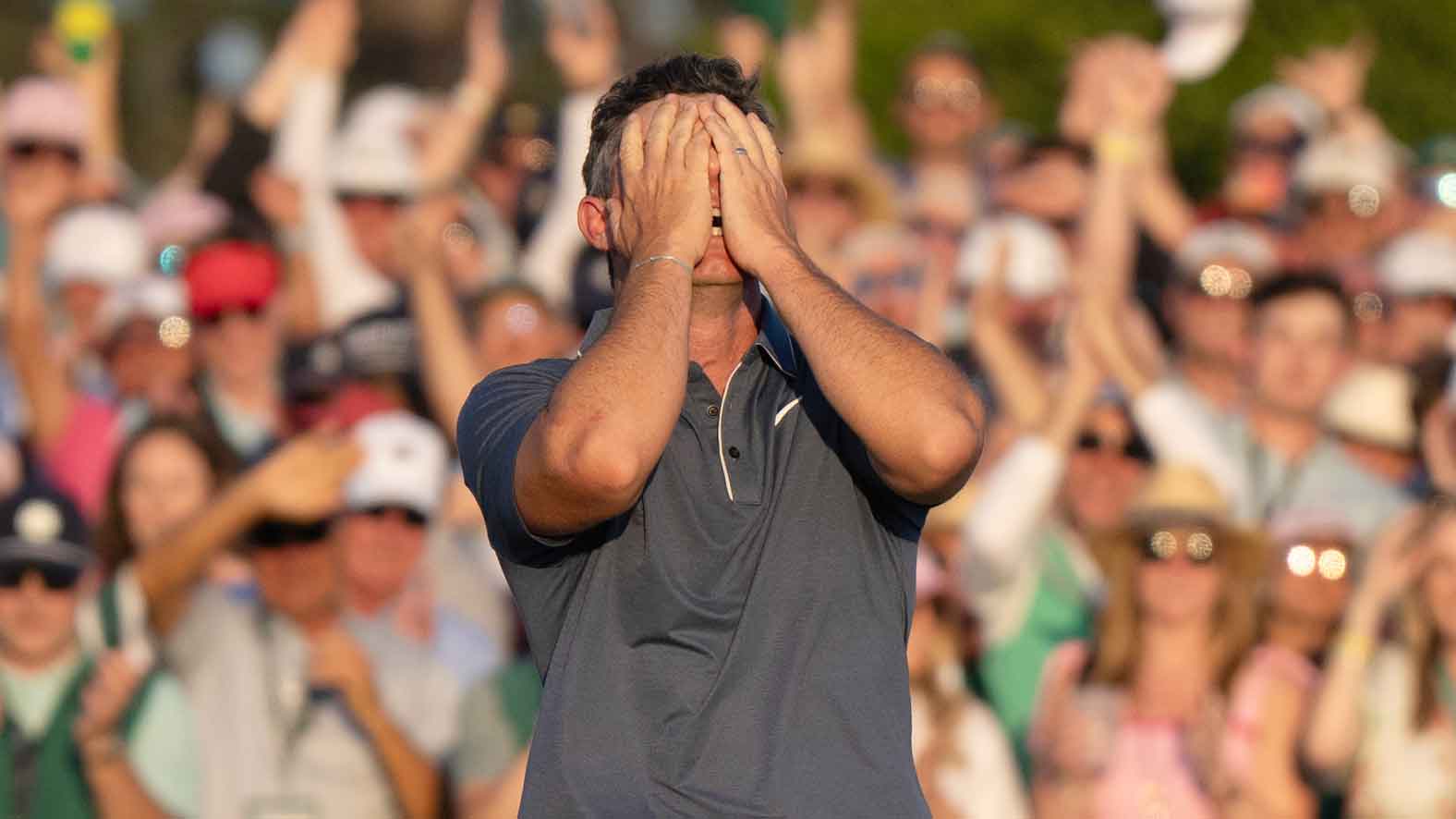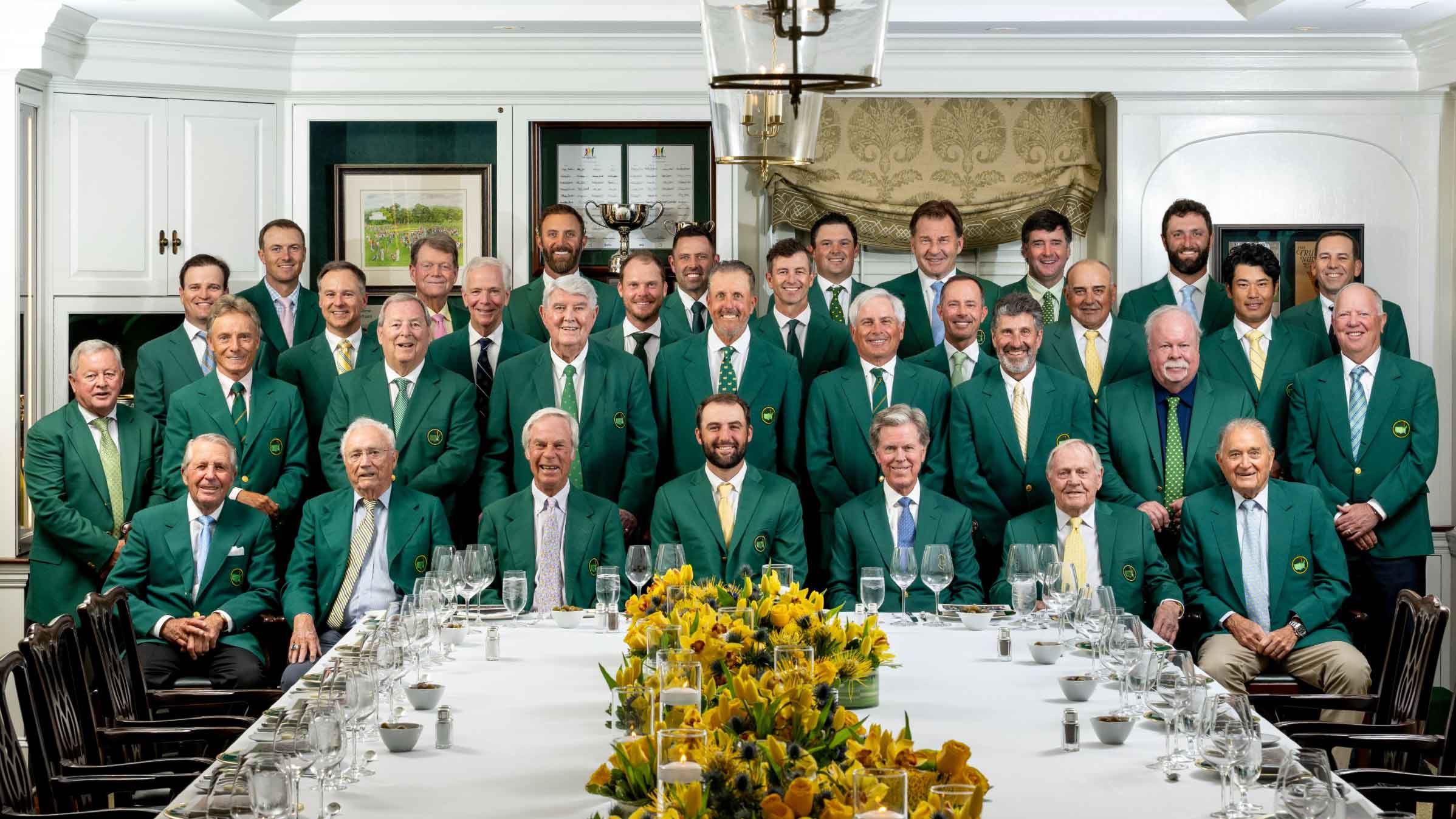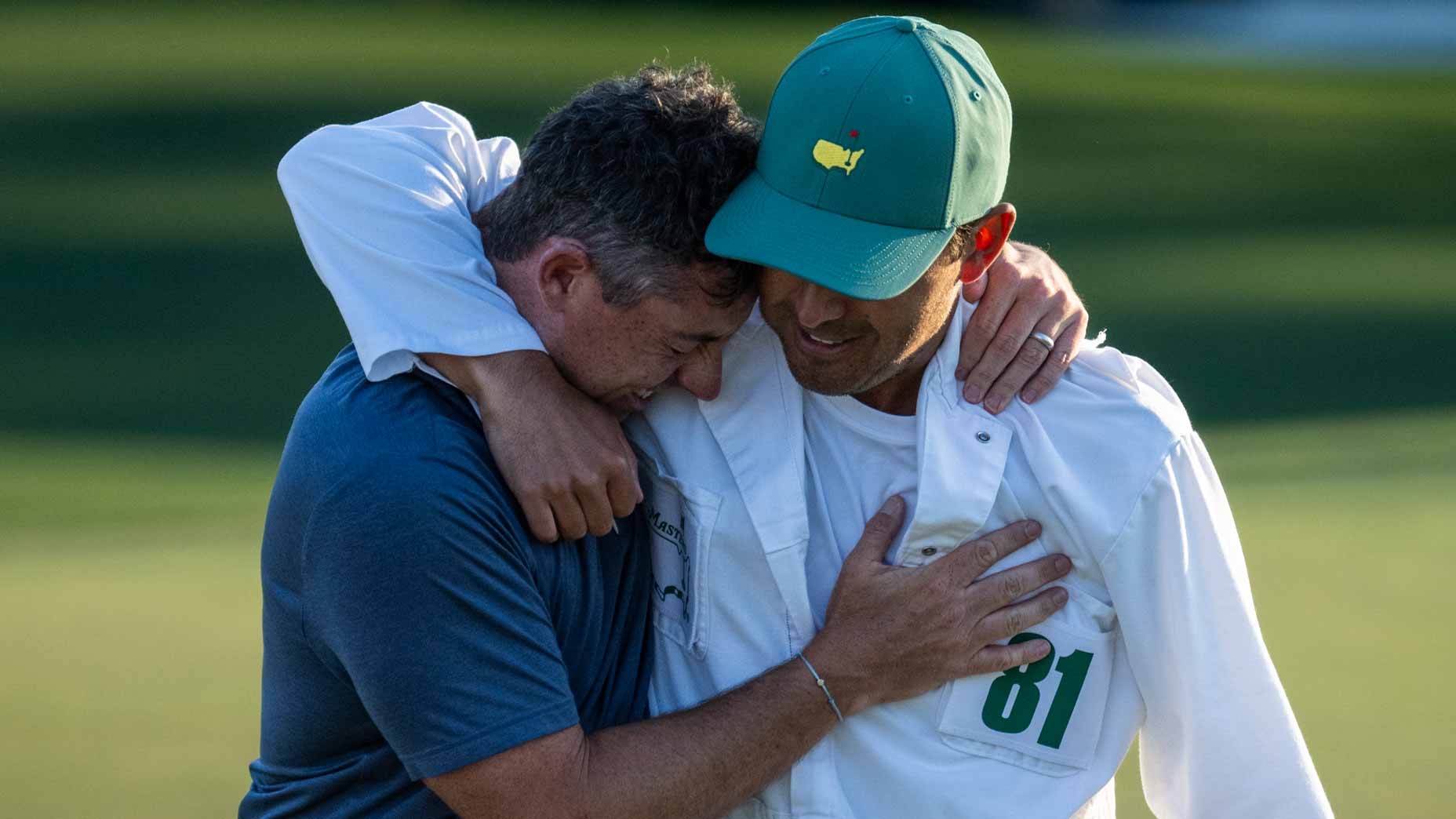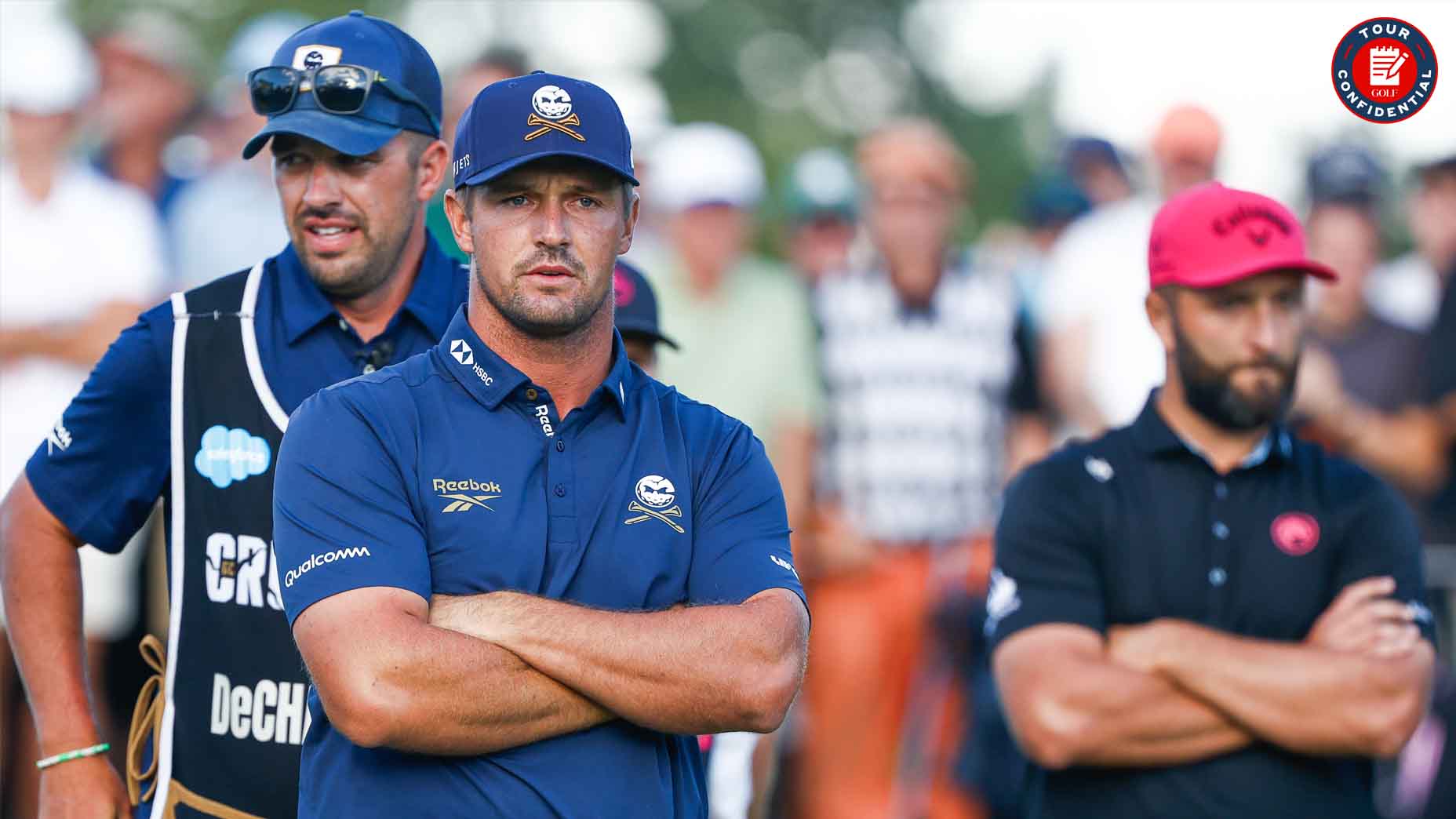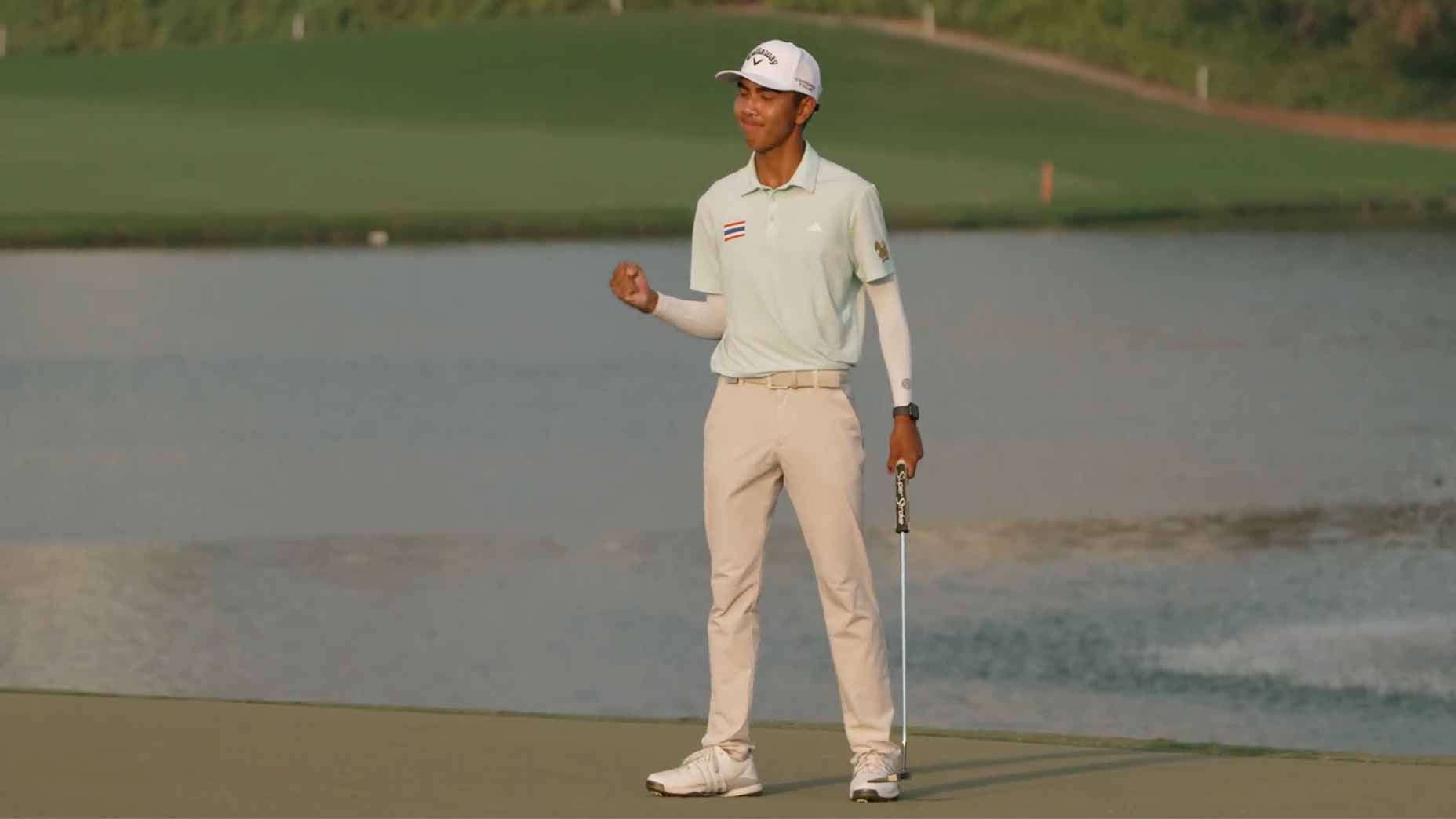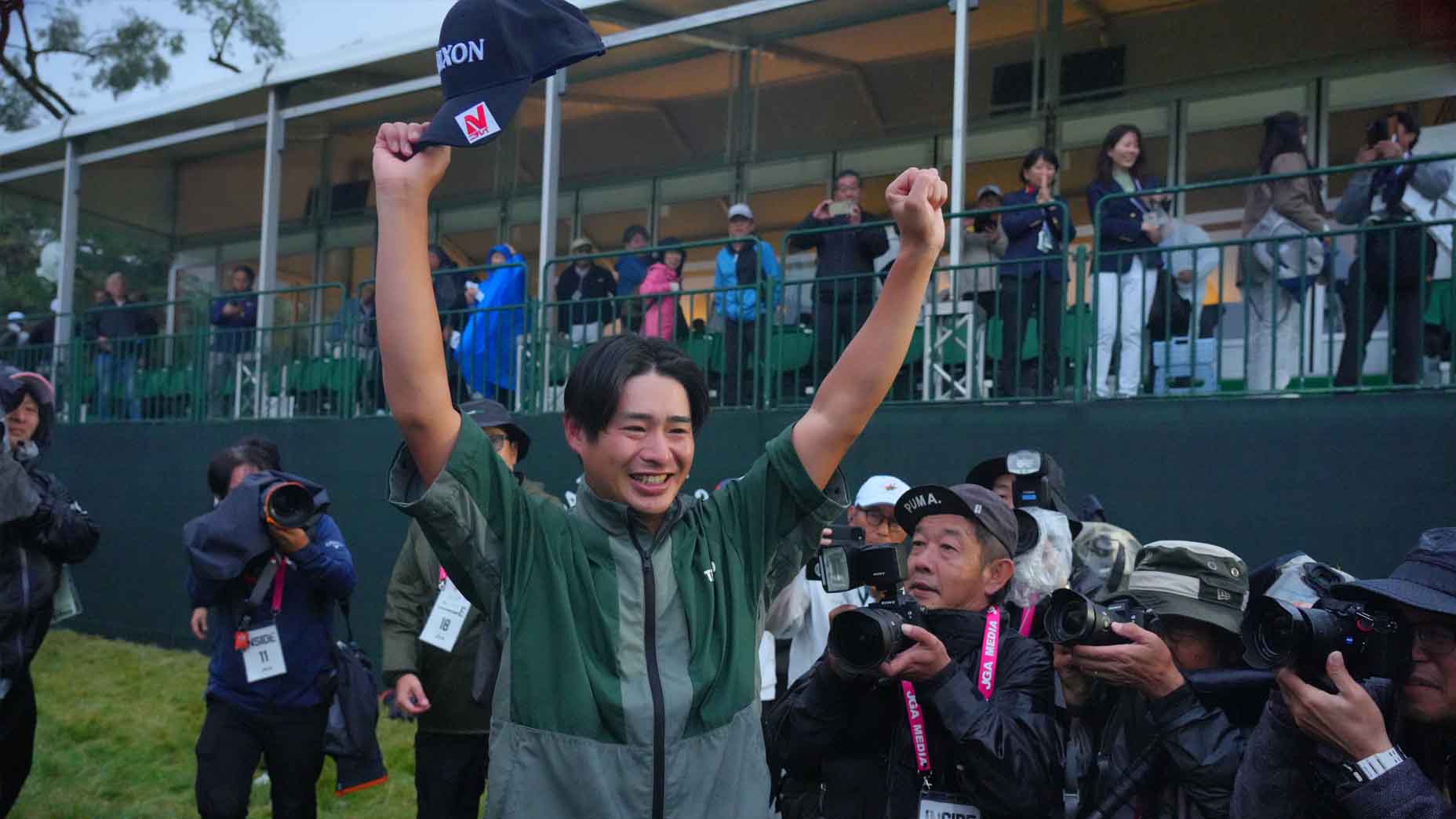AUGUSTA, Ga. — This is the 88th Masters and there are 89 players in it, here at its start. A smaller number will play on the weekend. After each round, representing hundreds of rounds and thousands of holes, each player will turn in a signed scorecard to the tournament’s rules committee, and we, the golf-loving public, will believe the scores. We’ll believe the scores and, by extension, the golfers posting them. Nothing is more fundamental to the game.
And should the day come when we don’t believe the scores and the golfers posting them, there won’t be enough money in the world to save televised golf. The credible scorecard is professional golf’s starting point. It has to be the truth, the whole truth and nothing but the truth.
Now while all that is true, it is also the case that golf often has some weird rules mystery brewing, a golfing soap opera and character study, shaped by settled law and green-grass jurisprudence. Law & Order: Scorecard Pencils Unit!
Just to keep this discussion to the Masters, in all its wonderful intimacy, who could forget this hit from yesteryear (1958): Arnold Palmer and His Embedded Ball. Or, 10 years later, this one: Roberto De Vicenzo and the Case of the Mismarked Scorecard. There’s often something.
Eleven years ago at the Masters, Tiger Woods signed an incorrect scorecard, after making an improper drop on the 15th hole in his Friday round. (He was not trying to cheat. He got confused about the rule.) The tournament’s rules committee could have disqualified him for weekend play. It didn’t. Woods could have withdrawn from the tournament. He didn’t. Woods finished in a tie for fourth, four shots behind the winner, and golf-heads still talk about that rules debacle. Imagine if he had won?
Brooks Koepka was 22 then and playing golf wherever he could. Two months earlier, he had finished in a tie for fifth at the 2013 Kenya Open. Like many of the prominent players in the game today, he grew up watching Tiger Woods. Rory McIlroy, Jordan Spieth and Wyndham Clark did, too. Bryson DeChambeau, Francesco Molinari — the list goes on. There’s a battalion of players who practically worshipped Woods as they came up in the game. Patrick Reed and Justin Thomas and Tony Finau all readily admit that. When Brooks Koepka was a sports-loving kid in Florida 20 years ago, Tiger Woods was the most dominating athlete in the world.
He lived nearby and in another world. The distance between them has narrowed since then.
At last year’s Masters, in the first round and (it so happens) on the 15th hole, Koepka was in obvious violation of a rule that prohibits offering, or soliciting, advice. (Rule 10.2.) His caddie clearly mouthed the word five twice in the direction of Gary Woodland’s caddie, the second time with an agitated look on his face. This was seconds after Koepka had played his second shot with a 5-iron. Koepka, while taking off his golf glove, might have also signaled five, by way of four outstretched fingers and his thumb.
After completing the round and reviewing a tape of the moment, Koepka could have assessed himself a two-shot penalty. He didn’t. The tournament’s rules committee could have given him a two-shot penalty. It didn’t. Koepka finished in a tie for second, four shots behind the winner, Jon Rahm. Brandel Chamblee and Paul McGinley discussed the issue on Golf Channel briefly that night — they were both outraged or at least chagrined — but aside from that, nobody seemed to much care.
Including Koepka, one year later. In a pre-tournament press conference on Tuesday, Koepka was asked about this odd moment in golf, captured by broadcast cameras. Specifically, he was asked about the rule, the one that prevents caddies, or their players, from sharing or asking for advice. You can find people — caddies, players, rules experts — who think the prohibition on sharing information is downright stupid. Others, of course, don’t. On such debate the golf world turns.
5 bizarre things you forgot happened during last year’s MastersBy: Sean Zak
“Everybody’s exchanging information, all day long,” Koepka said, in his on-brand, nonchalant way. He was semi-bearded. His tone revealed nothing, not even boredom. “Looking in guys’ bags, caddies are signaling all day long. But who knew? I think I was just foreshadowing what was going to happen.” For a final punctuation, he offered a toothy smile. He is not an athlete, and this is said with admiration, who has ever tried to win a charm contest. His golf skill carries the day.
Were his words on Tuesday afternoon a tacit admission about what happened on 15 a year ago? Impossible to say but easy to debate.
A year ago, the tournament rules committee issued this statement: “Following the completion of Brooks Koepka’s round, the committee questioned his caddie and others in the group about a possible incident on No. 15. All involved were adamant that no advice was given or requested. Consequently, the committee determined that there was no breach of the rules.”
There were levels and levels of complication in that “possible incident” and its handling, including Koepka’s status as a LIV Golf golfer, the fact that he gained no advantage from offering the information and, by all available evidence, neither did Woodland. But all involved, including the rules committee, decided to look the other way and adopt a no-harm, no-foul, let’s-contain-the-damage approach. Golf could see the long-term effect in the years and decades to come. There’s nothing in the rule book about no-harm, no-foul. All you’ll find is rules, all of them under constant review and occasional revision.
For the rest of that week, the golf establishment, to generalize and understate, was not rooting for Koepka. But talent is talent and about a month after Rahm’s popular win at last year’s Masters, Koepka won his fifth major title, at the PGA Championship at Oak Hill. He signaled the accomplishment with four outstretched fingers with his thumb making five. His teeth were on display then, too.
The incident last year was another pin in the strange, lovely hot-air balloon that is golf’s otherness. A pin through a piece of tape. The damage is not immediately apparent. The air is escaping slowly.
On Tuesday, Koepka, Woods, McIlroy, Clark and Spieth were all asked rules questions in their pre-tournament press conferences. Asked for a broad statement about the role the rules play in the game, Spieth said this:
“It’s a beautiful game. It can be played by anyone, at any level. But you’ve got to do it honestly.”
You’ve got to do it honestly.
How Jordan Spieth viewed Rory McIlroy’s ‘really tricky’ dropsBy: Jack Hirsh
Spieth was summarizing, perfectly, golf’s underlying value system. He was inside the Press Building’s arctic, windowless auditorium, his hat off, per club tradition. From a portrait, Bob Jones, Augusta National’s cofounder, was gazing in his direction. The cult of golf. You don’t have to know, chapter and verse, the nuances of Rule 10.2 to be in it.
The former USGA president Bill Campbell, a golfing purist if ever there was one, spent half his long life (he died in 2013 at age 90) trying to get a rule changed, the one by which you are penalized if you are struck by your own ball. It used to be two shots. Now it is none.
What a joy (some would say) if the out-of-bounds rule was changed to just a one-stroke penalty, play the ball where it went out. A golfer can dream.
Woods was asked if he would be in favor of changing the current O.B. rule. Every duffing golfer knows the pain of the word reload. Woods said, “I think there’s a number of rule changes that would have to come before that one.” He did not reveal his pet list. He surely had other and more pressing things on his mind.
McIlroy was asked if he would like to see rules officials play a more active role in officiating play, as you see in almost every other sport.
“In a way I would like to give more responsibility to the rules officials because it takes responsibility off us,” McIroy said. McIlroy and Spieth had a brief and awkward moment at the Players Championship last month over where a tee shot by McIlroy last crossed dry land on its way into a pond. Spieth, at Riviera, was disqualified for signing an incorrect scorecard after a hurried signing and a dash to a clubhouse restroom.
“I think most of you in this room know that I’m a traditionalist,” McIlroy said. “And there are a lot of things about golf and the traditions of golf that I really enjoy and I almost cherish. I think if you can play golf the right way, it sort of makes you feel like you can live your life the right way at the same time. It’s a great metaphor for life. I’m quite nostalgic when it comes to those sorts of things in the game, and it would be a shame to get rid of all of them.
“But we do have — in the top level of professional golf — we do have everyone keeping our score, whether it’s through apps or through walking scorers or whatever. I think what happened to Jordan at Riviera, for example, was unfortunate. I don’t think that an error like that should mean a disqualification from a tournament.”
The USGA and the R&A are always reviewing golf’s various rules, including at one point your signed card becomes stamped and official and forever. No rule is haphazardly written. The opposite. Rule 10.2 allows a player to look in another bag to see what another player is hitting. But you cannot touch the bag because that would be . . . weird and intrusive! And you cannot ask because the other player might . . . misrepresent! Golf is a game of honor. It really is. But it’s also a game that understands that man has a naturally tendency to try to swindle. The rulebook attempts to nip that urge before it flowers.
Wyndham Clark, the reigning U.S. Open champion, had a peculiar situation in the rough on 18 in his Saturday round at Bay Hill this year, where he was pushing the flange of his wedge into the rough and right behind the ball. The rulebook allows a player to “lightly” touch the rough. Jack Nicklaus, in those situations, always hovered his club over ball, to be sure that there was no question about whether the ball moved or whether he was too aggressive in taking his stance. Nicklaus took his cues on how to play from Bobby Jones, the great amateur who started the Masters, and Joe Dey, the PGA Tour’s first commissioner after a long career with the USGA.
On Tuesday, Clark said this about his Bay Hill situation and its aftermath:
After moving-ball controversy, Wyndham Clark calls for simpler rulesBy: Kevin Cunningham
“When we finished that round, we had no idea why the officials were in there. And obviously, when you watch the tape, maybe it doesn’t look good. I mean, the one thing in my defense is I’m setting the club down, I feel like I have the right and freedom to be able to set the club down where I want. I wasn’t trying to improve my lie by any means.
“But it’s definitely something I talked about with my caddie. And he’s like, ‘Hey, the cameras are on us more.’ Not that I was doing anything wrong prior to that when the cameras weren’t on us, but every little thing we do is magnified when the cameras are on you.
“So I maybe now have to be a little more conscious of not putting the club down as much. You just have to really watch what you do. You’re under the microscope. And it was unfortunate that it maybe looked poor on camera. But I was laying up, regardless, and I still laid up. So I didn’t think I enhanced the lie by any means.
“I think that was a one-off, unique experience. But I definitely will, in my mind, go, ‘Okay, I don’t want to have any question that I’m trying to do anything that’s like cheating, or anything illegal.’ So I will be definitely more aware of it.
“But I’ve been doing what I did for years and no one’s ever called me out on it. So I don’t know if I’m necessarily going to change it. I might be just more aware and make sure that the optics also don’t look like I’m doing something wrong.”
You might be tempted to say that none of this is easy. Well, hovering is easy. Taking two shots after your caddie clearly gave advice is easy. Taking the most conservative drop possible when there is confusion about where a ball last crossed before a death-by-drowning is easy.
Withdrawing from a tournament after massive confusion over a drop is easy. The thing that benefits in the long term is the game. Nicklaus and Arnold Palmer, the only touring pros who were invited to join Augusta National as members, always enjoyed reputations for putting the game ahead of themselves.
They handed the game as they played it to the next generation, to Tom Watson and Ben Crenshaw and Nick Price.
Nicklaus was a winner of the Bob Jones Award, the highest honor the USGA bestows. So was Palmer. Also Joe Dey and Bill Campbell. Also Watson and Crenshaw and Price.
Woods is getting the award at the U.S. Open in June, at Pinehurst. His contributions to the game, and to educational philanthropy, are massive, immeasurable. He has had the ability to go big like nobody in golf before him. But what we’re talking about here are golf’s smallest matters. His drop on 15 on a Masters Friday 11 years ago was off by about a yard. But there’s a by-the-book way to drop and an incorrect drop and his was incorrect. Can you have one rule for one player and not for another?
The underlying issue about the advice question is whether it shakes up the concept of a level playing field. If two players are friends and share information — “advice” — and in another group there is no sharing, where’s the fairness in that?
In another context — nothing to do with the rules or intra-round play — Koepka was asked whether he would give advice to other players about how to play in majors?
“Yeah, I think,” Koepka said. “To certain people I would.”
Rule 10.2 understands more about human nature than any of us might realize.
Michael Bamberger welcomes your comments at Michael.Bamberger@Golf.com
